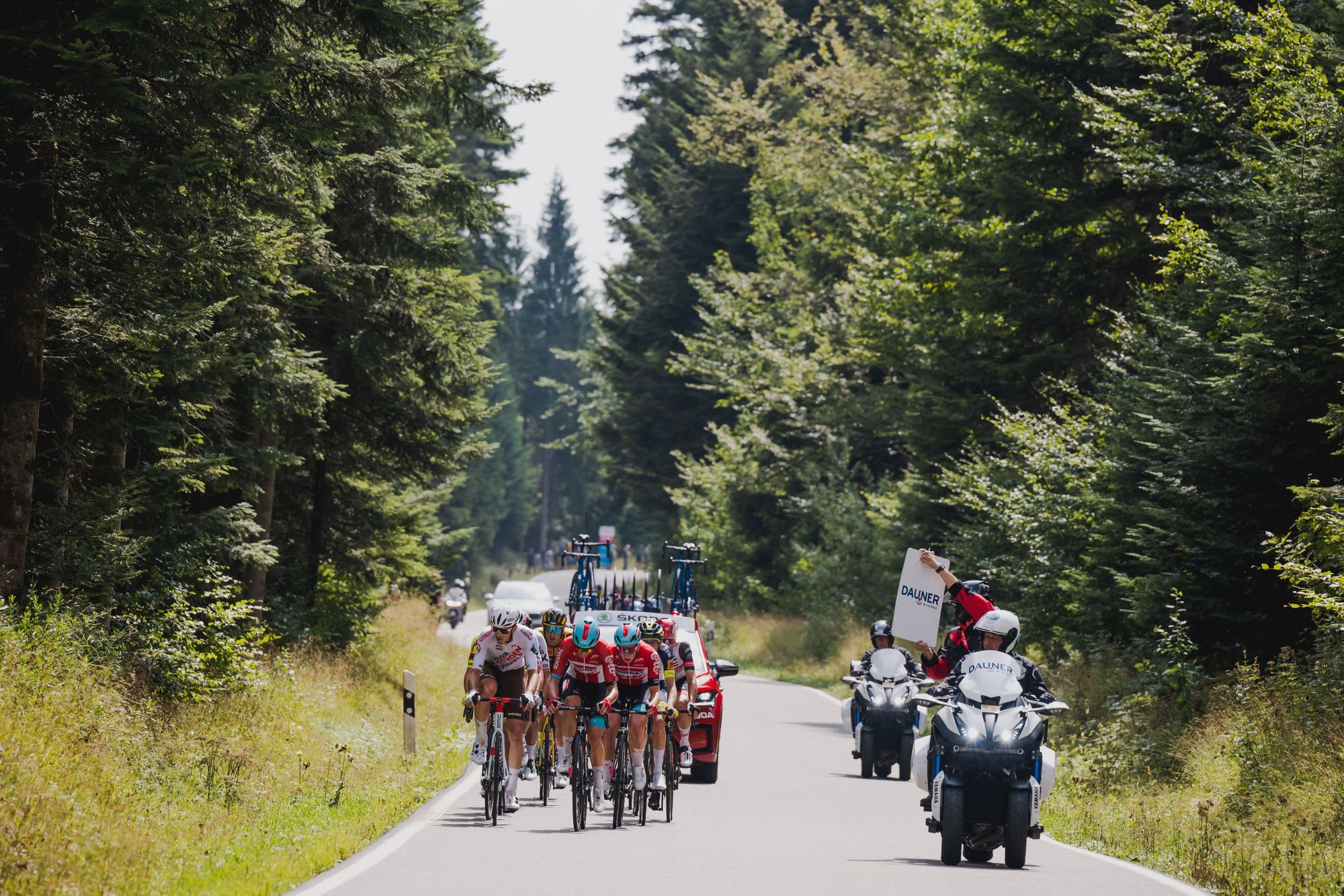How does a break form in cycling?

In a multi day race, the peloton behind with potential general classification contenders may only give the break a gap up to (and usually with a buffer) the amount the virtual GC leader is ahead by.
So if rider A is in first by six minutes, his team would only allow the break in front around five and a half minutes between them such that there would never be a chance for anyone from the break to have a chance at securing a GC position.
This is why it's so hectic sometimes when the break forms as teams are trying to figure out who are "allowed" candidates to be able to go into the break and who are not. It's also why you'll see riders drop tons of time in the initial stages of multi day races. They want to indicate to the peloton they're not going for a GC position, and should be “allowed” in the break. Still doesn't mean they'll be let in one.
Hot tip for viewers. Riders not wearing leg warmers at the start of a cold stage is an indication that they’re going to attempt to cause or be part of a break on that stage. As the riders know they’ll be working hard trying to create or stay in the break and won’t require the extra warmth provided by the extra gear.
The gap allowed for breaks when grand tours and stage events initially kick off (and when there’s no time gaps to factor in) is generally around three minutes. Why? Because three minutes is a reasonable amount of time to close at any point in time by the peloton, but still long enough that it can’t easily be “covered” by a single rider by themselves.
For example, if Team A tells one of their riders to cover the break from the peloton, it’s much more do-able as a single individual if the gap is only 1:30 compared to 3:00. This is based on the average amount of power that a rider can produce from the peloton. Going above their threshold to close a 1:30 gap is much more plausible compared to closing a 3:00 gap. A rider attempting to close a 3:00 gap will likely “go into the red” and blow up.
In a multi day race, the peloton behind with potential general classification contenders may only give the break a gap up to (and usually with a buffer) the amount the virtual GC leader is ahead by.
So if rider A is in first by six minutes, his team would only allow the break in front around five and a half minutes between them such that there would never be a chance for anyone from the break to have a chance at securing a GC position.
This is why it's so hectic sometimes when the break forms as teams are trying to figure out who are "allowed" candidates to be able to go into the break and who are not. It's also why you'll see riders drop tons of time in the initial stages of multi day races. They want to indicate to the peloton they're not going for a GC position, and should be “allowed” in the break. Still doesn't mean they'll be let in one.
Hot tip for viewers. Riders not wearing leg warmers at the start of a cold stage is an indication that they’re going to attempt to cause or be part of a break on that stage. As the riders know they’ll be working hard trying to create or stay in the break and won’t require the extra warmth provided by the extra gear.
The gap allowed for breaks when grand tours and stage events initially kick off (and when there’s no time gaps to factor in) is generally around three minutes. Why? Because three minutes is a reasonable amount of time to close at any point in time by the peloton, but still long enough that it can’t easily be “covered” by a single rider by themselves.
For example, if Team A tells one of their riders to cover the break from the peloton, it’s much more do-able as a single individual if the gap is only 1:30 compared to 3:00. This is based on the average amount of power that a rider can produce from the peloton. Going above their threshold to close a 1:30 gap is much more plausible compared to closing a 3:00 gap. A rider attempting to close a 3:00 gap will likely “go into the red” and blow up.

Stages that start with a hill or climb are more likely to form breaks than those with valley starts. This is because only so many riders are able to push out enough power, typically rouleur style riders, to be able to form a break from the peloton on the flat. Lighter, hill climb-esque riders simply aren’t able to force enough watts through the pedals to be able to distance themselves from the bunch. Whereas if the stage starts with a climb, all riders, rouleur style and hill climbers are all able to distance themselves from the peloton if they so desire.

Stages that start with a hill or climb are more likely to form breaks than those with valley starts. This is because only so many riders are able to push out enough power, typically rouleur style riders, to be able to form a break from the peloton on the flat. Lighter, hill climb-esque riders simply aren’t able to force enough watts through the pedals to be able to distance themselves from the bunch. Whereas if the stage starts with a climb, all riders, rouleur style and hill climbers are all able to distance themselves from the peloton if they so desire.
